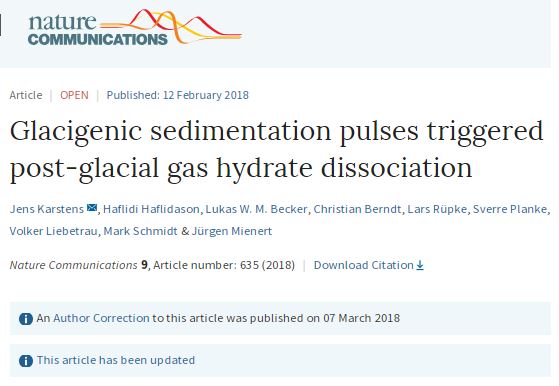
Large amounts of methane are stored in continental margins as gas hydrates. They are stable under high pressure and low temperature, but react sensitively to environmental changes. Bottom water temperature and sea level changes were considered as main contributors to gas hydrate dynamics after the last glaciation. However, here we show with numerical simulations that pulses of increased sedimentation dominantly controlled hydrate stability during the end of the last glaciation offshore mid-Norway.